Brasserie
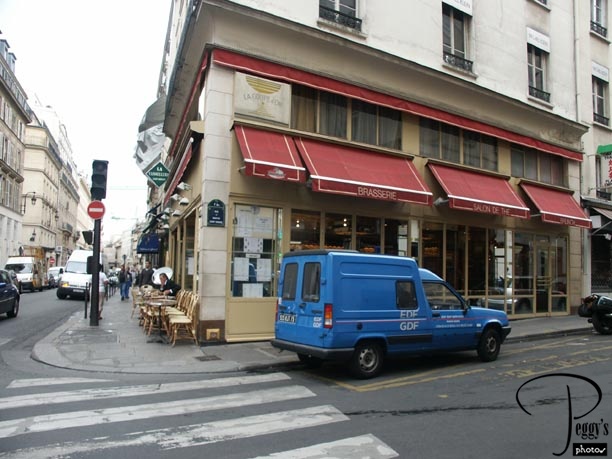
I am now on my own each morning for breakfast. I walked down to the corner to this brasserie and asked for the English menu. Not too much choice in breakfast items in Paris––I ordered a ham and cheese omelette (adequate), croissant (freshly made and delicious), orange juice (freshly squeezed), and coffee. Price: 12 Euros plus 19.5% VAT tax. During my stay in Paris, I ordered different coffees––the cafe au lait had too much milk in it for me; cafe American seems to have been espresso already diluted with water or served with hot water for me to dilute it; and cafe alongjay (not the way it is spelt but how it is pronounced) which seemed to be very similar to cafe American. You could ask for either hot or cold milk for your coffee––it was very good with hot milk, and no matter how the coffee came, it was marvelous strong coffee.

Brasserie
Paris Metro Montmartre Mural
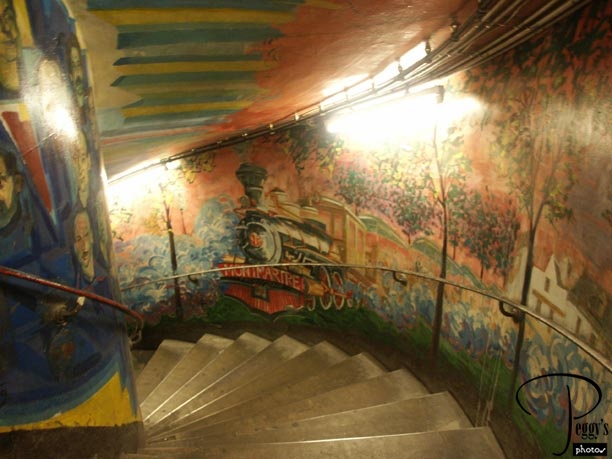
Meg met Chris, Britt, and me at my hotel and then we traveled via the Paris Metro to Montmartre, which is northeast of the Tulieries, away from the Seine. The station that we exited the Metro from was way underground and we had to climb up a circular staircase up to the street, but we also were treated to this mural on our climb up.

Paris Metro Montmartre Mural
Montmartre Mural
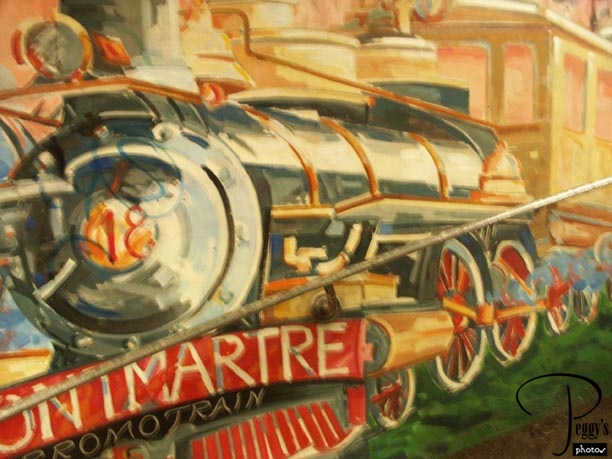
More of the mural.

Montmartre Mural
Montmartre Mural
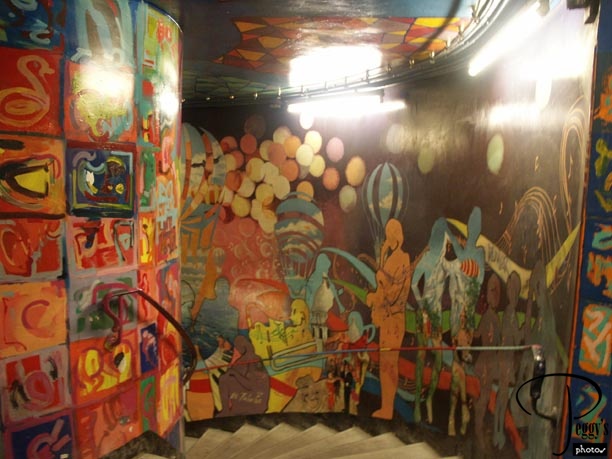
More of the mural.

Montmartre Mural
Artists of Montmartre
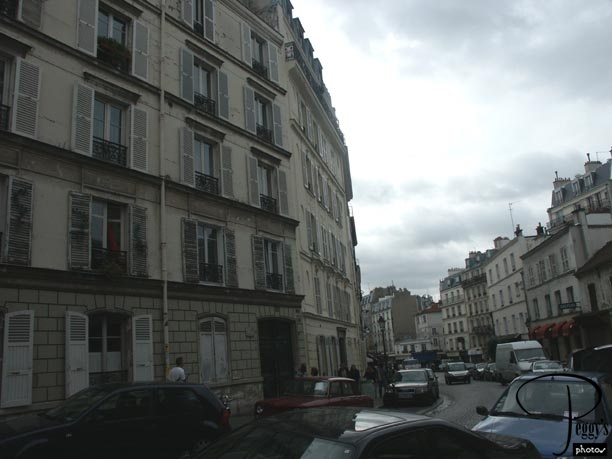
Britt and Chris gave Meg and me a wonderful tour of Montmartre. They had taken a walking tour here led by a professional tour guide and they re–created the tour for us. This area is known more for its past than for its present. By the end of the 19th century, Montmartre was a mecca for artists, writers, and poets. It also was the location of bordellos, cabarets, etc., and had a reputation as a place of depravity. Most of the artists have left and so have most of the cabarets. This photo shows the apartment house where both Vincent Van Gogh and his brother Theo lived between 1886 and 1888. Theo and his family lived on the third floor, and Vincent, on the second floor.

Artists of Montmartre
Artists of Montmartre
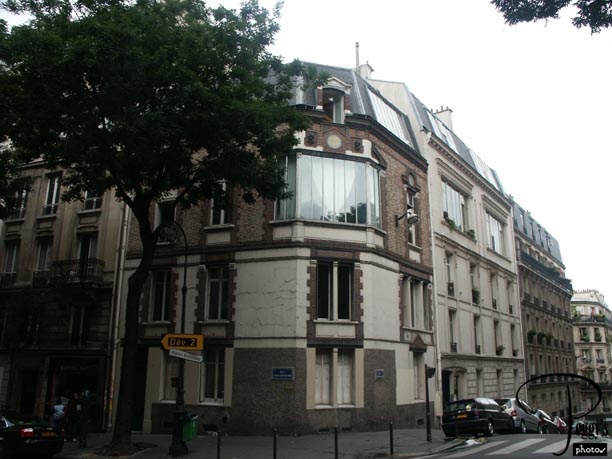
This photo shows the apartment where Toulouse–Lautrec lived.

Artists of Montmartre
The Artists of Montmartre
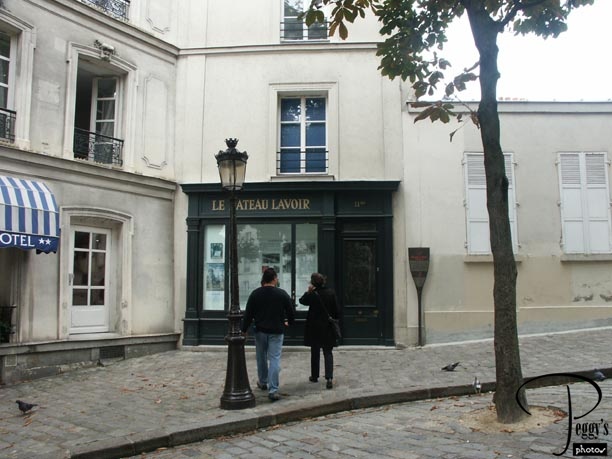
Le Bateau–Lavoir. This is where many poor artists shared beds and one sink. Among these artists were Picasso and Modigliani. The original building burned down in 1970 and this is a concrete replica of it. Today, new artists have studios here. That Chris and Meg in the photo.

The Artists of Montmartre
The Artists of Montmartre
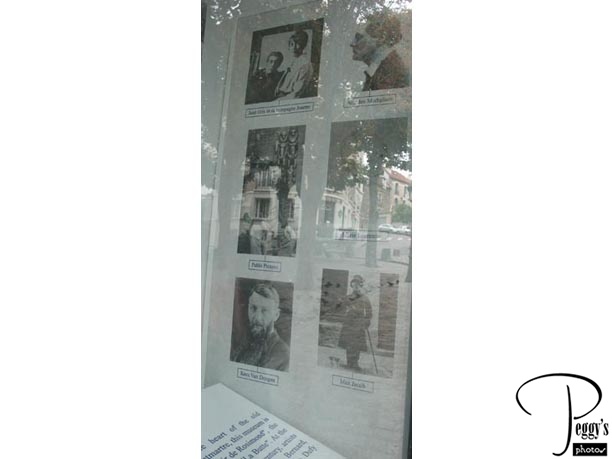
Display in the window of the artists who lived and painted here. The photo on the left, middle, is of Picasso. There are also some very interesting museums in Montmartre such as the Musee de Montmartre which includes works by Modigliani and Espace Montmartre Salvador Dali which has a permanent exhibition of 330 works by Dali.

The Artists of Montmartre
Montmartre
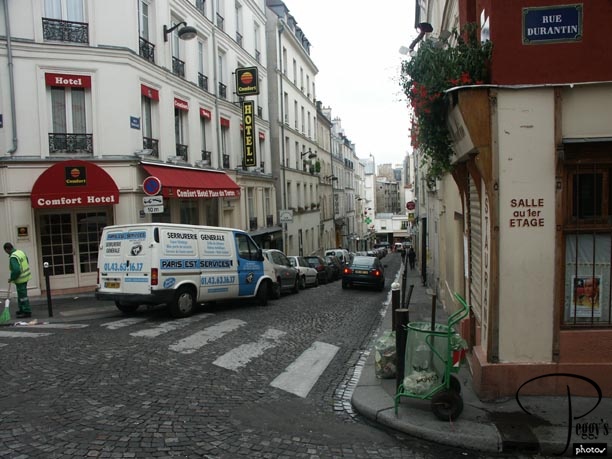
Today, Montmartre is quaint, with many wonderful street scenes. Notice the street cleaner. Paris streets are cleaned frequently either by hand or by a motorized street sweeper.

Montmartre
Montmartre
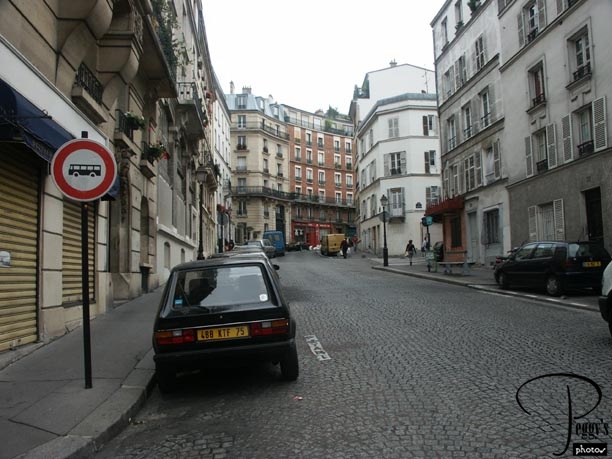
Street scene.

Montmartre
Montmartre
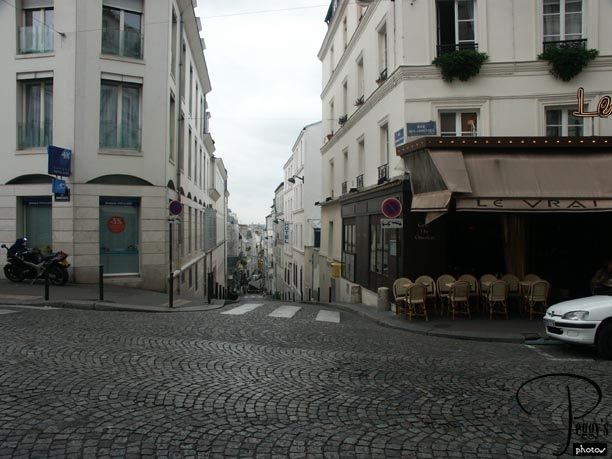
Street scene.

Montmartre
Montmartre
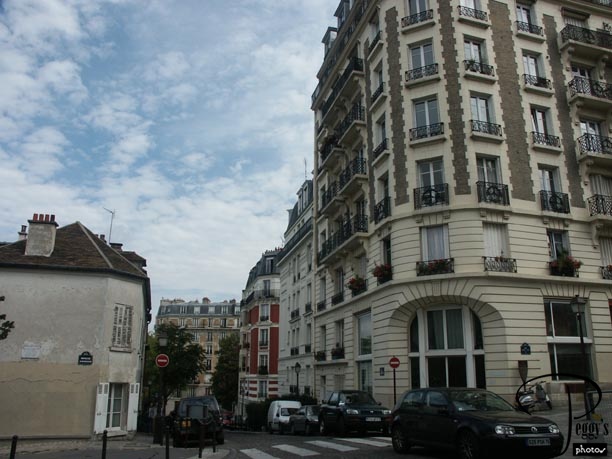
Street scene.

Montmartre
Montmartre
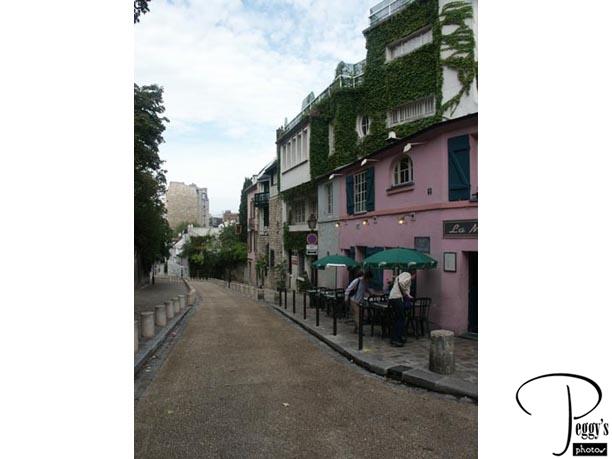
Street scene.

Montmartre
Montmartre
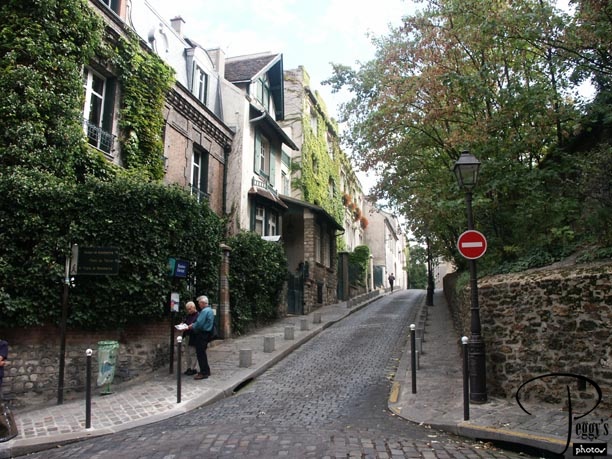
Street scene.

Montmartre
Montmartre

Au Lapin Agile (the Agile Rabbit) was a popular cabaret in the early 1900s and my book says that Toulouse–Lautrec painted a series of posters of this cabaret. It is today one of best known nightspots in Paris. The Moulin Rouge is also in Montmartre but we didn’t stop by to see it.

Montmartre
Montmartre
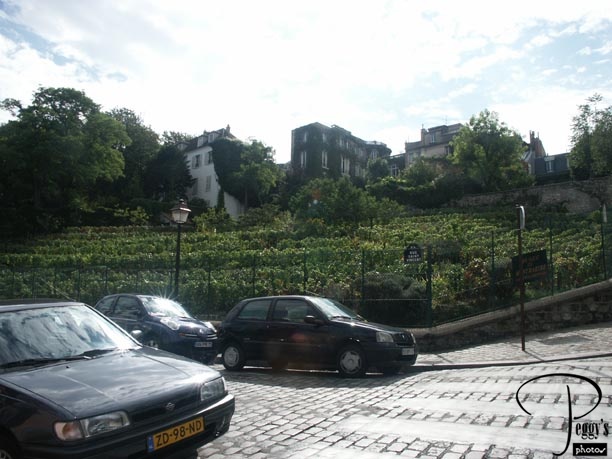
This vineyard in Montmartre is the last surviving vineyard in Paris. The grape harvest here is celebrated the first week of October.

Montmartre
Montmartre
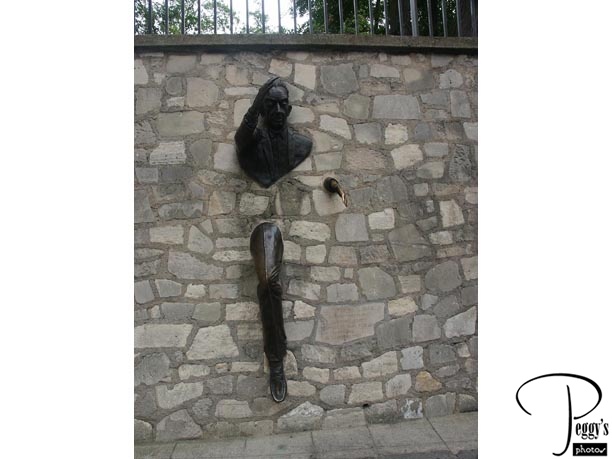
Interesting wall sculpture.

Montmartre
Montmartre
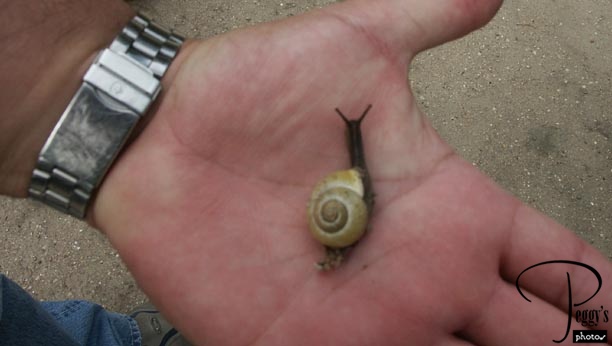
Escargot anyone? Chris found this snail in one of the parks. The snail made its way to America via a Frenchman who wanted to raise them for this French delicacy. They escaped and went into our gardens. It is nice to know that the French gardens are today also being attacked by snails.

Montmartre
Montmartre
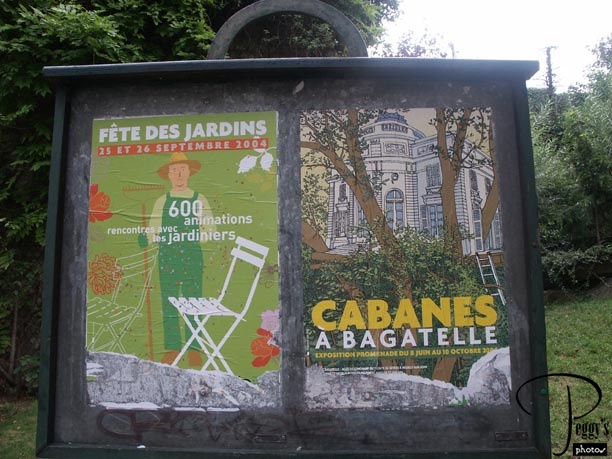
Interesting advertisement.

Montmartre
Montmartre–Place du Tertre
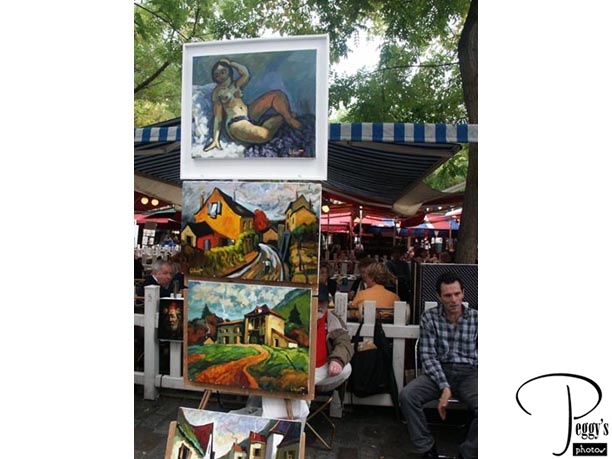
Now we have reached the main tourist area of Montmartre, called the Place du Tertre. This square is the highest point in Paris (about 450 feet). Artists started exhibiting their works here in the 19th century. Some of the works for sale.

Montmartre–Place du Tertre
Montmartre–Place du Tertre
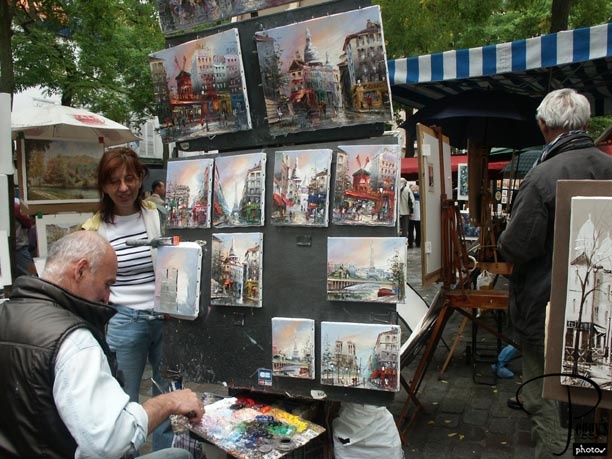
More works for sale.

Montmartre–Place du Tertre
Montmartre–Place du Tertre
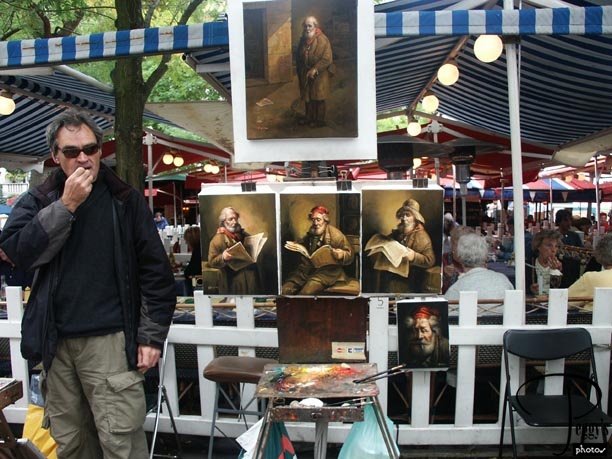
More works for sale.

Montmartre–Place du Tertre
Montmartre–Place du Tertre
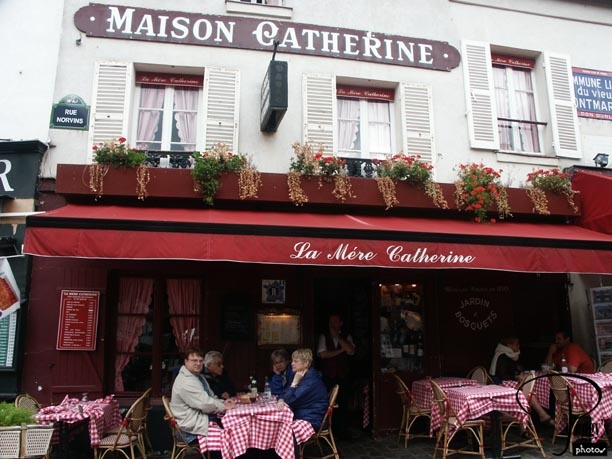
There are many cafes here. La Mere Catherine dates back to 1793. In 1814, it was a favorite spot of the Russian Cossacks. They would bang on the table and shout ‘bistro,’ the Russian word for quick––hence, the word bistro came about, meaning a restaurant serving quick food. You’ll also see this restaurant as a favorite subject of Parisian artists. We had lunch across from this restaurant in a center section of the square where restaurants had set up many tables.

Montmartre–Place du Tertre
Montmartre–Place du Tertre
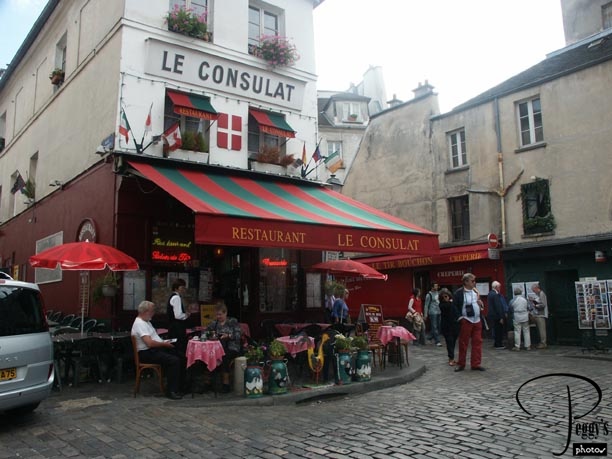
Another cafe.

Montmartre–Place du Tertre
Montmartre–Place du Tertre
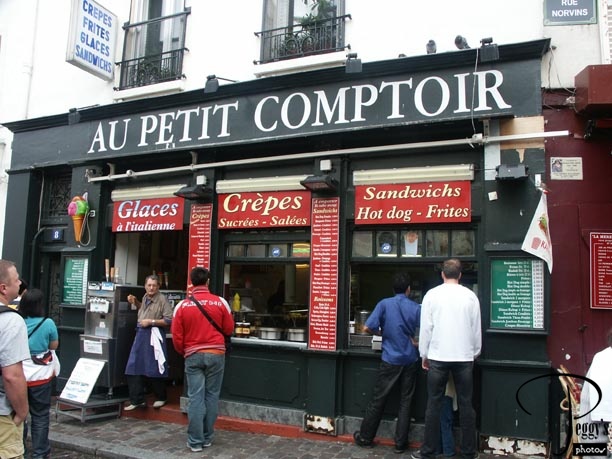
Quick order restaurant.

Montmartre–Place du Tertre
Montmartre–Place du Tertre
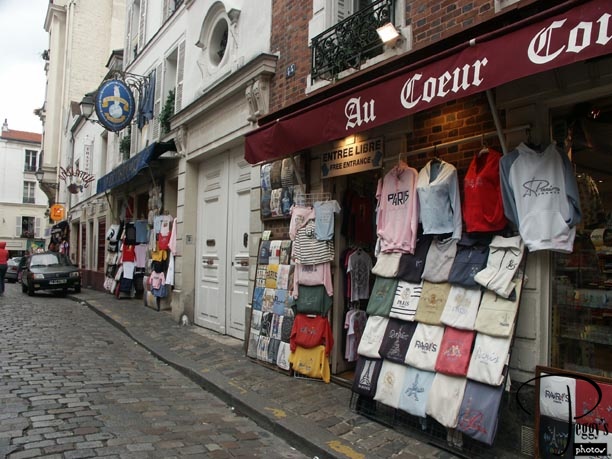
Some of the many souvenir shops here.

Montmartre–Place du Tertre
Montmartre–Sacre Coeur
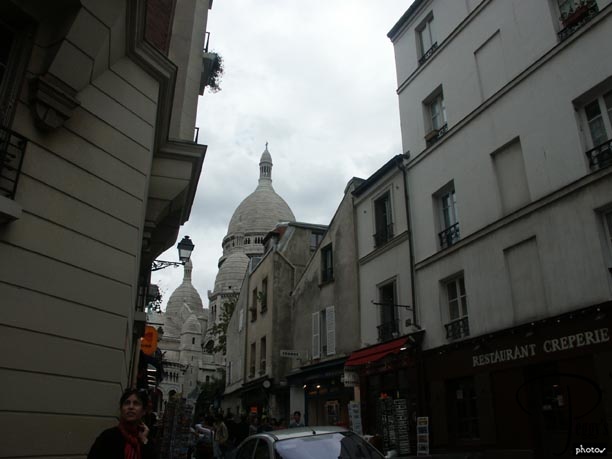
The other tourist draw here is this bascilla (seen in the background). In 1870, two Catholic Frenchmen made a vow to build a church dedicated to the Sacred Heart of Christ if France survived the Prussian invasion. France survived and the building of this church was started in 1875 and was completed in 1914. This photo shows the church walking up from the Place du Tertre.

Montmartre–Sacre Coeur
Montmartre–Sacre Coeur
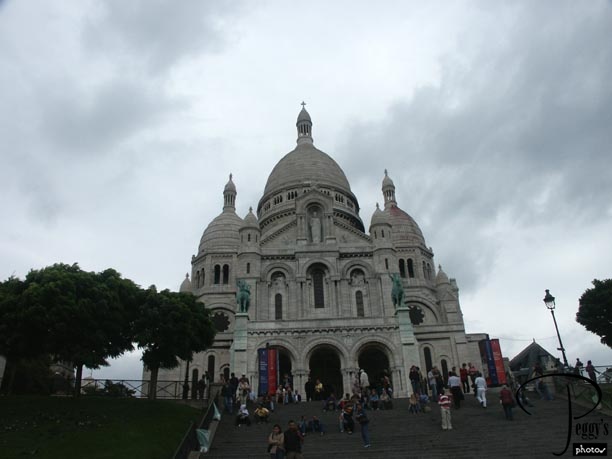
No photographs are allowed inside the church.

Montmartre–Sacre Coeur
Montmartre–Sacre Coeur
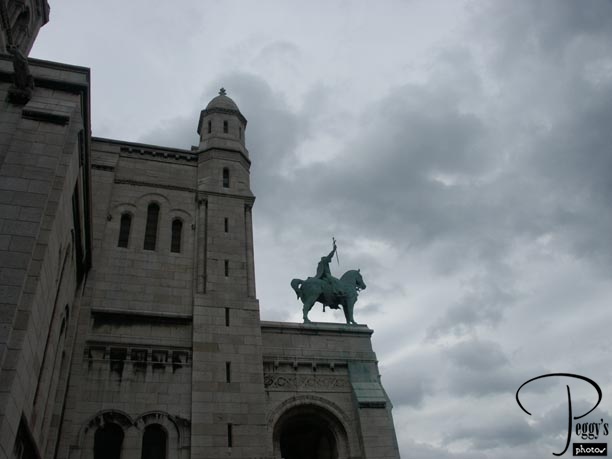
Close up of one of the statues. One of the statues is of Joan of Arc and the other is of Saint Louis. I think this is the one of Saint Louis.

Montmartre–Sacre Coeur
Montmartre–Sacre Coeur
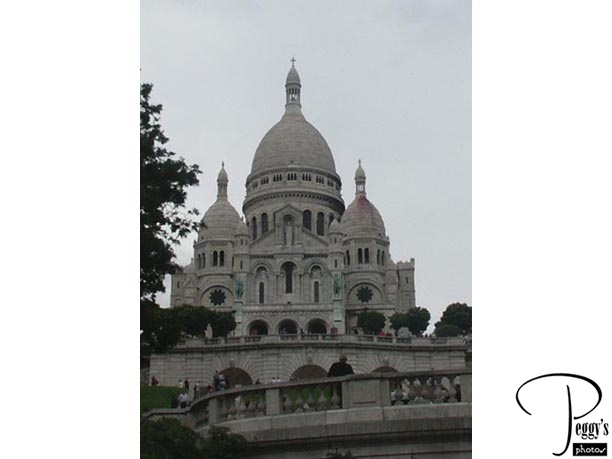
View of the church from down below. There is a funicular to take you down from the hill or else you can walk down.

Montmartre–Sacre Coeur
Montmartre
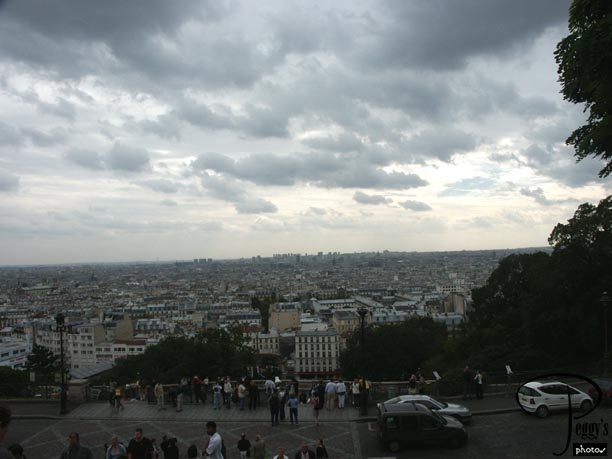
The city of Paris from the top of Montmartre.

Montmartre
Montmartre
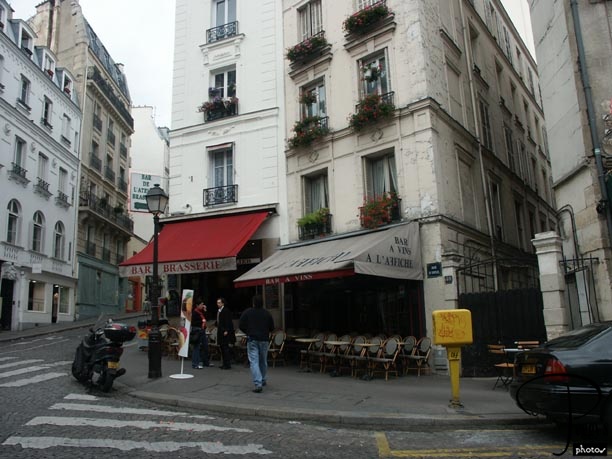
We decided to end our day at the cafe on the right––tea and coffee. This was Meg’s last day in Paris. We had to say a sad goodbye to her. We very much liked having her on our adventures. Britt left us us three to go to the Gare du Nord to buy Eurostar tickets for Britt’s and my train trip to London (she found out that if you try to buy these tickets at the Eurostar office at the train station, you will be paying almost twice what you would if you had bought them from Eurorail–– you can do this over the Internet, but you need at least three days for them to deliver them to you––we were to leave for London in two days’ time, so Britt had to find a cheaper way to buy them. She did, but they were still more expensive than if we had bought them farther in advance––advice, buy your rail tickets for the high–speed trains before you leave for Europe). Chris, Meg, and I went on the Metro and we all got off at the stop that Meg needed to in order to transfer to another train. We hugged goodbye. There is a movie clip of our walk to the Galeries Lafayette: Go to Movies, Western Europe, France, “Sounds of Paris.”

Montmartre
Galeries Lafayette
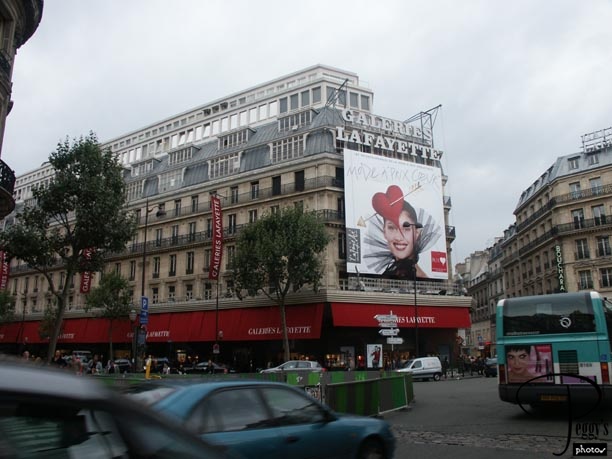
Chris took me then to the Galeries Lafayette, a Parisian department store. I was in search of rechargeable AA batteries of at least a 2000 rating. I had bought an international battery charger for my camera’s batteries, but somehow I took the new charger with me and left the new batteries I bought at home. The charger was only for batteries with a 2000 rating or above and the Radio Shack batteries that I had taken only were rated 1800. A major emergency ensued to find rechargeable batteries in Paris. Britt and I had tried two stores in the morning. Chris and I went to the electronics section (no batteries) and they directed us to the toy section. After checking displays at about six of the cash registers in this section, we found two sets of them but I had to buy one of the sets that included a battery charger with it. (You still need to remember that you have to take European converter plugs with you even if you have an international charger.) With the batteries in hand, now we had to get someone to ring up my purchase. From previous experience, Chris knew that the French salespeople in this store (and in some other stores) do not really care if you buy anything or not and do not react even if they are fully aware that you are ready to pay for your purchases. It took a bit of persuading to get someone to ring up my purchases.

Galeries Lafayette
Galeries Lafayette
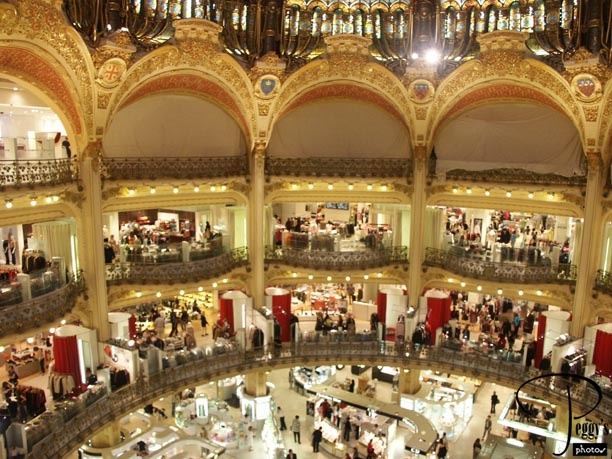
But this store is absolutely beautiful. And the clothes that I saw for sale were even more beautiful. This is the store where you want to go with an extra $2000 or $3000 to spend. But I only made one other purchase here, of a French scarf––one that is about 12 inches wide and 6 feet long. Scarves are used in Paris both as a fashion statement and to keep your neck warm during the chilly mornings and evenings. I wore the scarf almost everyday henceforth. They really work.

Galeries Lafayette
Galeries Lafayette
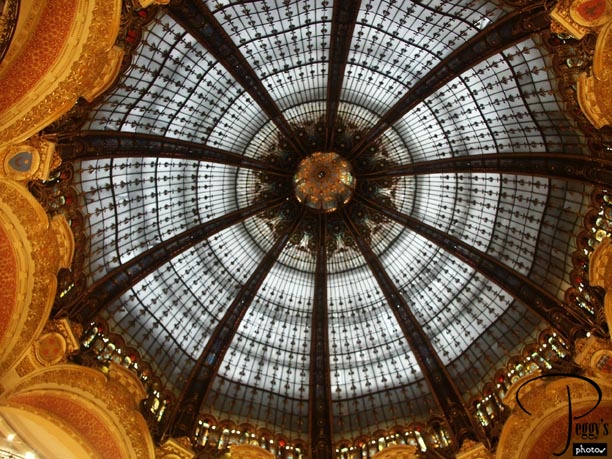
The dome at the top of the store. It was steadily raining when we were ready to leave the store. The store was close enough to my hotel that we were to walk back. I had my little travel umbrella. Chris didn’t have one. But he did warn me about Parisians with umbrellas. Stay out of their way. One woman walking in front of us clipped at least four people with her umbrella. When I got back to my hotel, I took a needed nap and woke up too late to go out for dinner (I was on my own for this and maybe I just didn’t want to go out in the rain again.)
